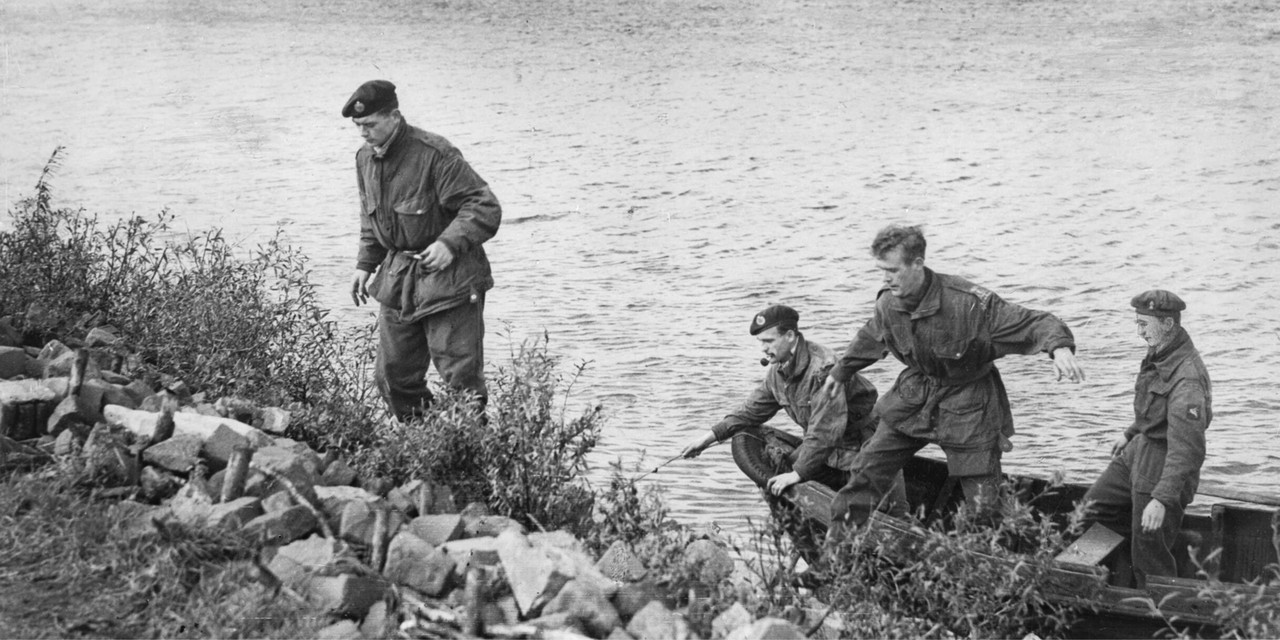Operation Market Garden (OMG) was an important Allied military operation during the final phase of the Second World War. The operation formed part of the Allied advance from Paris to the Rhine River and took place in the Netherlands from 17 to 25 September 1944. This large-scale attempt to liberate the Netherlands from German occupation was undertaken by the Allied nations at great cost.
Operation “Market” was the name of the airborne operation, the first part of OMG, carried out by British, US-American, and Polish airborne troops. More than 35,000 Allied soldiers were dropped over important Dutch bridges (over the rivers Meuse, Waal and Rhine) between Eindhoven and Arnhem with the aim to occupy them. Operation “Garden”, the second part of OMG, involved the advance of the ground troops, with the British XXX Army Corps having to relieve the airborne troops at the captured bridges as quickly as possible.
Operation Market Garden, proposed by British Field Marshal Bernard Montgomery, was very ambitious, but ultimately failed to achieve its strategic goal. German resistance to the Allied conquest of the occupied territories was much fiercer than expected. In addition, bad weather conditions in England hampered the supply of reinforcements and supplies which were paramount for sustaining the bridgeheads along the rivers. The ground troops’ route of advance was cut off several times by the Wehrmacht and came to be known as “Hell’s Highway”.
The Allied advance in the Netherlands
On the morning of September 17, 1944, three divisions of the 1st Allied Airborne Army – the American 82nd and the 101st Airborne Armies and the British 1st Airborne Division started their journey in aeroplanes across the North Sea. They were dropped over strategic locations in the Netherlands, due to the weather conditions often longer distances away from the targeted bridges than anticipated. The city of Nijmegen in Gelderland played an important role during Operation Market Garden. With its two bridges over the Waal (the main branch of the Rhine), control of the city was vital to the planned advance on Arnhem.
Glider infantry and paratrooper units were landed into the Arnhem area during OMG and faced the German troops in the Battle of Arnhem (17 to 26 September 1944). The members of the British 1st Airborne Division at the Rhine bridge at Arnhem eventually ran out of ammunition, were beleaguered and then partly captured as prisoners of war on 21 September 1944. After nine days of fighting, the division’s remnants were evacuated during a night-time rescue mission called Operation Berlin (25 to 26 September 1944).
Covered by the 1st Polish Parachute Brigade and surrounded on three sides by superior German forces, approximately 2,400 men were withdrawn from the German-occupied territory north of the Lower Rhine. After this retreat, the Allies were unable to advance further and the front-line stabilised south of Arnhem. The road bridge at Arnhem became the proverbial “bridge too far”. It was later destroyed by advancing Allied troops, reopened in 1948 and named John Frost Bridge (John Frostbrug), a homage to the British airborne commander.
The Aftermath of Operation Market Garden's Failure
As a result of the failure of Operation Market Garden, the Allies had no choice but to launch a frontal and costly attack on the defensive lines of the German borders. This attack took place from 8 February to 11 March 1945 (Operation Veritable) and was part of the larger Rhineland Offensive. The operation was launched from the Nijmegen-Groesbeek area and from the province of Limburg.
Although Operation Market Garden was not successful in its entirety, it did result in the liberation of millions of civilians in the southern regions of the Netherlands. The rest of the country had to wait for its liberation until 5 May 1945, which is celebrated annually as the national holiday “Liberation Day” (Bevrijdingsdag).
